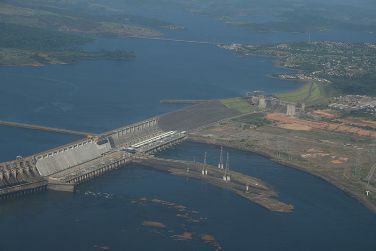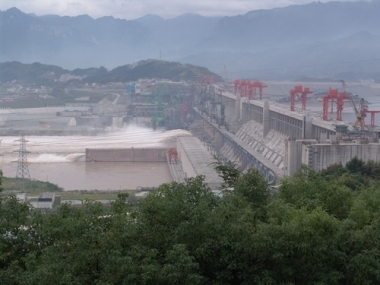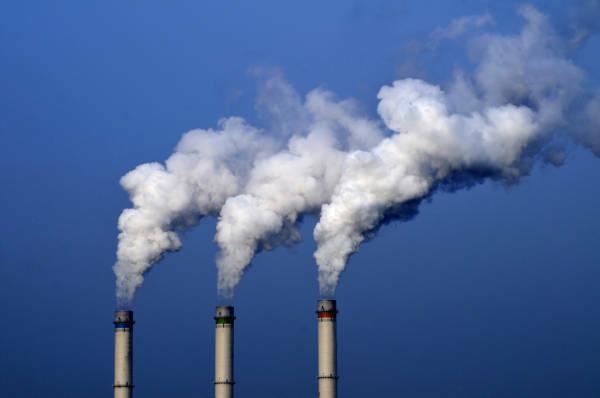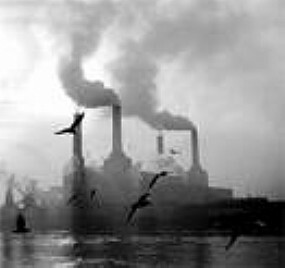hydroelectric plant is a construction that uses the flow of river water to generate electricity. For the construction of a hydroelectric power plant, it is necessary to dam the water of a river, which can occupy an area with large extensions. With this, the accumulated water exerts a certain pressure and, when passing through the turbines, provides the movement of the generator responsible for transforming mechanical energy into electrical energy.
Thus, hydroelectric plants have become the second largest source of energy production in the world. See below the 10 largest hydroelectric plants in the world in descending order:
10th La Grande 2 Plant – Canada (5,328 MW)
The La Grande 2 Power Plant was built in the Quebec region of Canada in 1992 in a project called “James Bay”, which involved the construction of a series of dams along the La Grande River. If the original project is continued and all dams built along the La Grande river are completed, including the “James Bay II” project, the La Grande 2 plant would produce a total of 27,000MW and would become the largest in the world. world.
9th Churchill Falls – Canada (5,428 MW)
It was built in the early 1970s and is the largest in Canada. It is located on the Churchill Falls River dam, in the Newfoundland and Labrador region. It is the largest underground hydroelectric plant in the world.
8th Krasnoyarsk – Russia (6,000MW)
Russia, being the country with the greatest hydroelectric potential on the planet, could not be left out of the list. The Krasnoyarsk Plant is the second largest in the country. The waiting time for the completion of this plant is noteworthy: its works began in 1956 and were completed in 1972. Its main use is to supply aluminum production plants.
7th Sayano-Shushenskaya – Russia (6,400MW)
Sayano-Shushenskaya is Russia's largest hydroelectric power plant. Its construction took place between 1963 and 1985, in the Yenisei region, southeast of the Cacassia Region. In terms of efficiency, it is one of the main plants in the world, as with just 10 turbines it produces 6,400MW.
Sayano-Shushenskaya is Russia's largest hydropower plant
6th Grand Coulee – United States (6,494MW)
The Grand Coulee Hydroelectric Power Plant is one of the most famous hydroelectric plants in the world, due to the its size and span: its dam is 1.6km wide and twice the height of the Falls. Niagara. When its construction was completed in 1974, it led the ranking of the largest hydroelectric power plants on the planet.
5th Tucuruí I and II – Brazil (8,370 MW).
Located along the Tocantins River, in the city of Tucuruí, south of Belém do Pará, the Tucuruí Dam is larger 100% Brazilian plant (at least until the completion of the Belo Monte plant) and features the second largest spillway in the world. Its construction took place between 1974 and 1984.

Aerial image of the Tucuruí Dam, in Pará.¹
In 2008, the Tucuruí plant underwent renovations that doubled its capacity, reaching the current 8,370 MW. Despite this, the plant may undergo a new expansion in energy production, with the construction of a third powerhouse. If this happens, production may exceed 10,500MW, jumping to fourth position in this ranking.
Do not stop now... There's more after the advertising ;)
4th kid – Venezuela (10,200 MW).
The Guri Dam, also known as the Simón Bolívar Hydroelectric Plant, is located on the Caroni River and its construction was completed in 1986. This plant guarantees the supply of all of Venezuela and also exports part of its energy to Brazil, more specifically the State of Roraima.
3rd Belo Monte – Brazil (11,233MW)
The Belo Monte Plant is the only one on the list that is still under construction. With its completion, it will become the largest all-Brazilian hydroelectric power plant and the second largest in Latin America. It was designed to have an installed power of 11,233MW, but it should only operate with 4,500MW, due to the reduced reservoir it will have. Its completion is forecast for the year 2015, with an estimated cost of R$26 billion reais.
The Belo Monte plant has also been drawing attention due to the controversies surrounding its construction and the followed by protests by groups, activists and environmental organizations that fight for the paralysis of their construction. Among the main criticisms are arguments that the dam area on the Xingu River bed will displace Indians and riverside populations. Furthermore, there is a concern about the environmental impacts that will be caused.
2nd Itaipu Plant – Brazil (14,000MW).
Until 2012, this was the largest hydroelectric plant in the world. Its most notable feature is the fact that it is a binational hydroelectric plant, being used by Paraguay and Brazil, since it is located on the border between these two countries, on the Paraná River. Its works started in 1975 and completed in 1982, its construction counted on a mutual cooperation between the two countries.

Photograph of the Itaipu Power Plant, the largest hydroelectric plant in the Americas
As agreed between the two parties, each country would use half of the total produced by the hydroelectric plant. Thus, as Paraguay does not fully use its half, it sells the rest to Brazil. The Itaipu Hydroelectric Power Plant is responsible for supplying 19% of Brazilian energy production.
1st Three Gorges Plant – China (18,200).
The Three Gorges Plant, located on the Yang Tsé River, in addition to being the largest hydroelectric plant on the planet, has two other important functions: first, it it helps to control floods caused by river dynamics in the region and, secondly, it helps to facilitate waterway transport along the Yang Tzu Construction began in 1993 and completed in 2012, at an estimated cost of US$25 billion.

___________________
¹ Image credits: Reporter of the Future
By Rodolfo Alves Pena
Graduated in Geography



